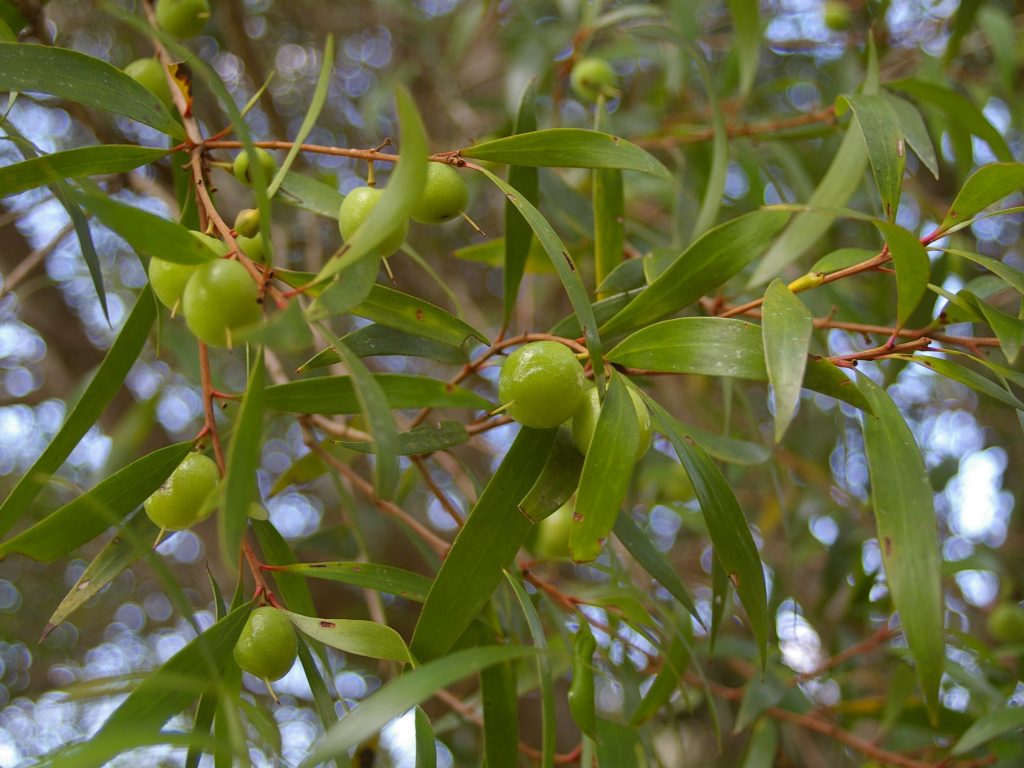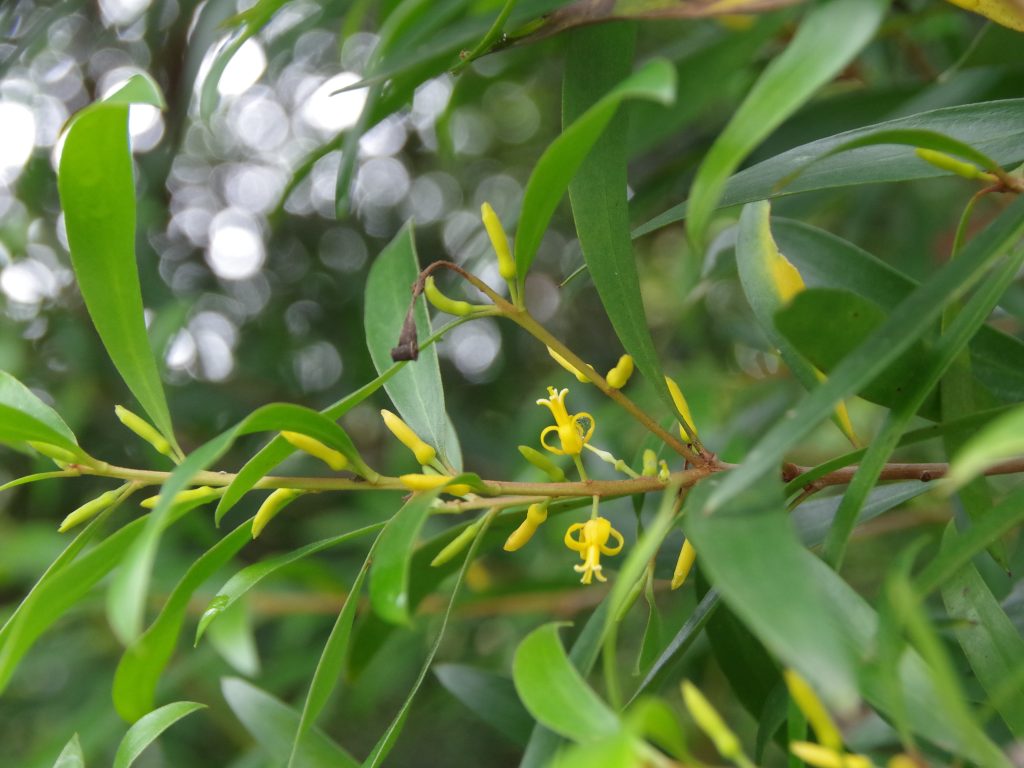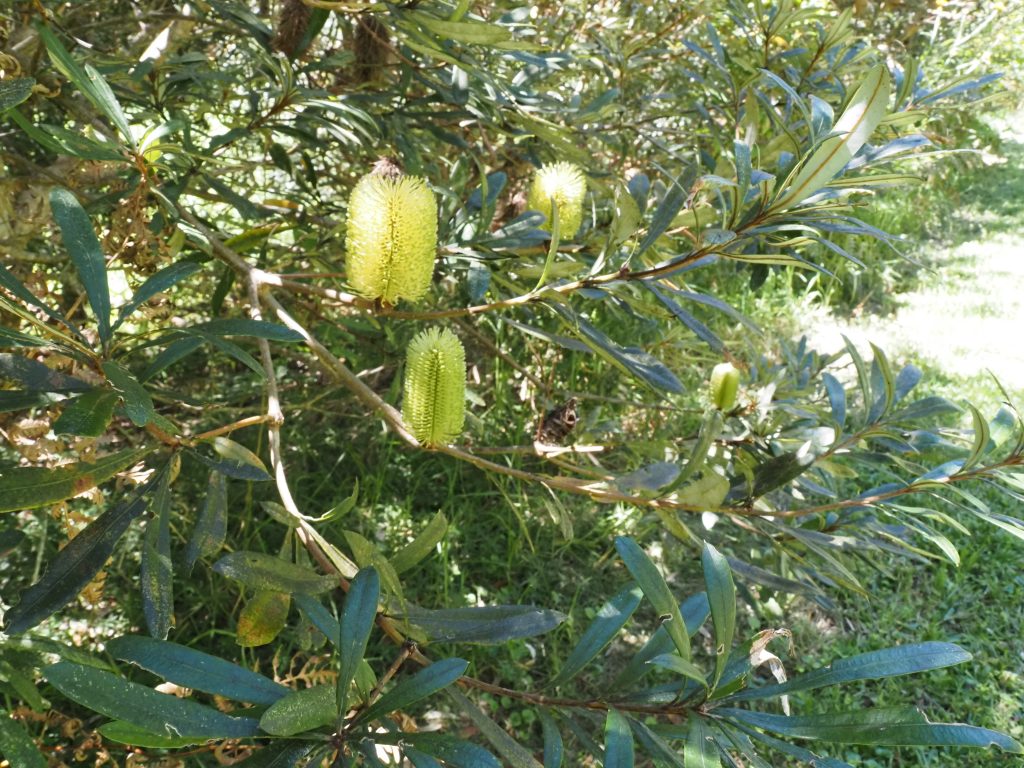
Coequosa triangularis
Coequosa triangularis occurs along the eastern coast of southern Queensland, New South Wales and Victoria. We have seen this species in January and February.















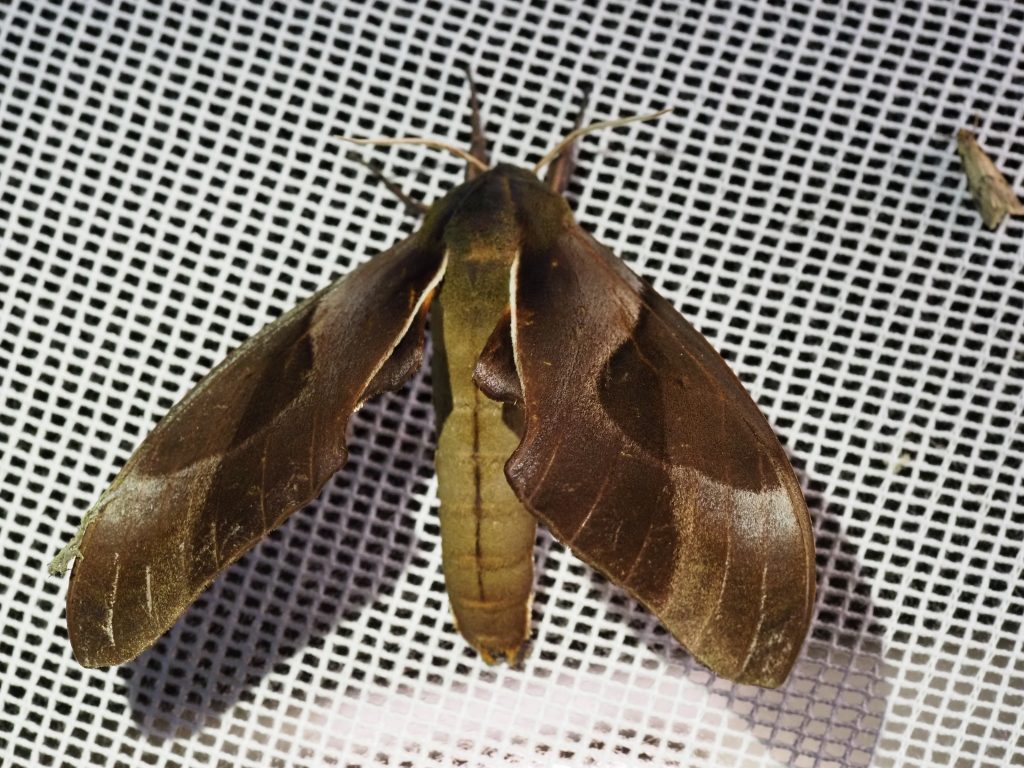
Here in Dorrigo mid instar larvae spend the winter in a predominantly torpid state openly exposed on a branch of the foodplant and suspend feeding for long periods of time. They have the ability to survive short-term exposure to sub-freezing temperatures.
We monitored almost daily the development of three larvae on a Persoonia media tree in their natural habitat in from the first week of May, 2013 through late autumn, winter and into spring of 2014. At +4mm the larvae were probably early 6th instar.
From mid autumn, minimum temperatures dropped rapidly – the lowest night time temperature recorded being -2.8°C. Between 26 May and 19 July the larvae remained in exposed positions without moving in a state of torpor. They then took an average of 12 days to moult from the 6th to 7th instar.
By spring when temperatures rose, development accelerated and the 7th instar lasted approximately 16 days with an addition 9-10 days to complete moulting. The 8th and final instar succumbed to parasitoids (Netelia sp.) in late October.

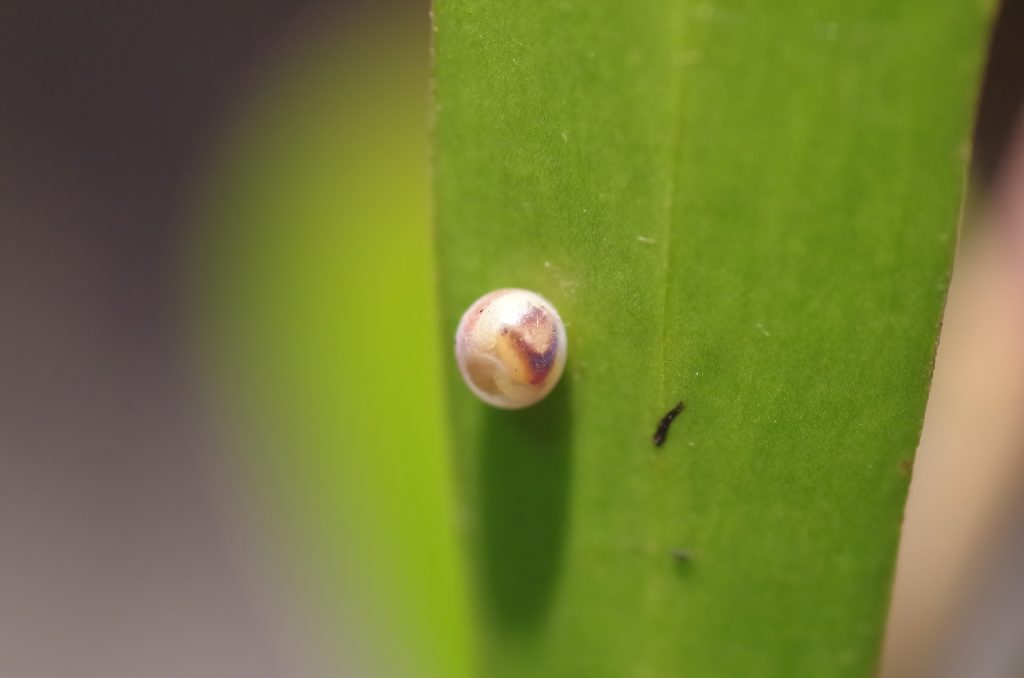























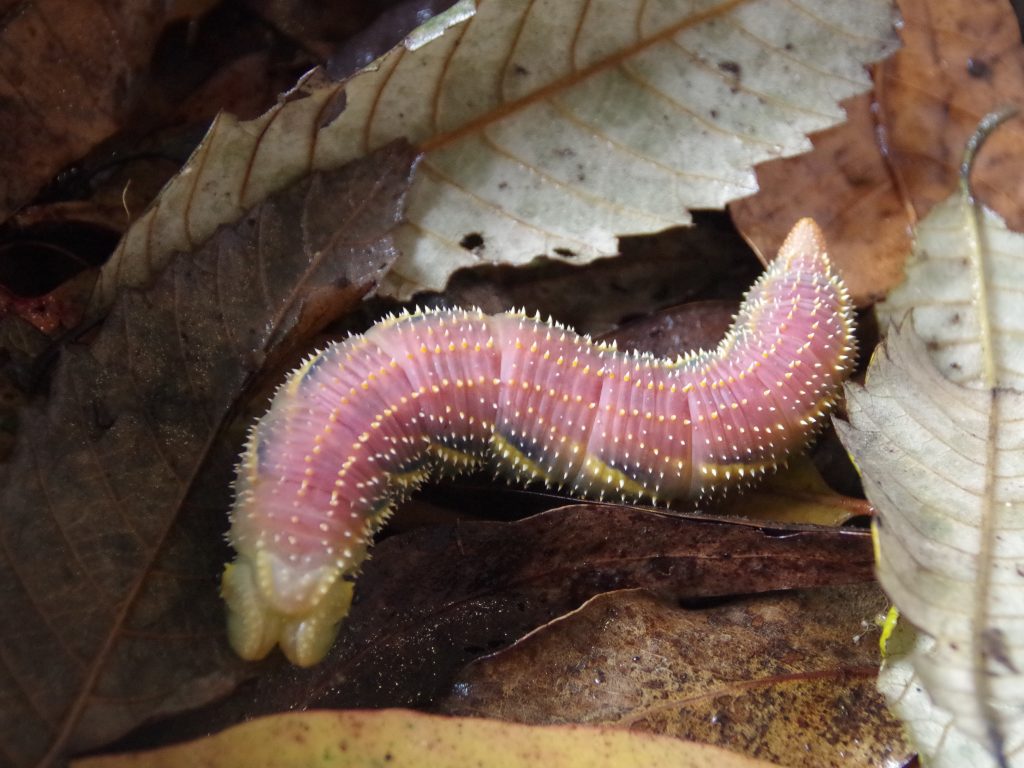




Larval foodplants
Banksia erecifolia, B. integrifolia, B. marginata, B. serrata, B. spinulosa; Grevillea robusta; Hakea sp.; Macadamia integrifolia; Persoonia lanceolata, p. levis, p. media, Stenocarpus sinuatus.
